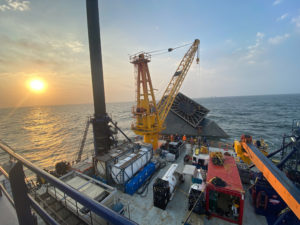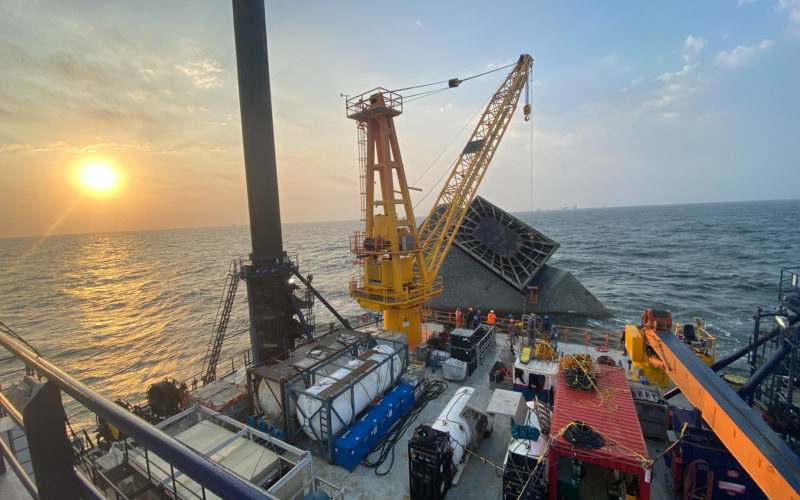
The National Transportation Safety Board (NTSB) has found that crew aboard the liftboat SEACOR Power did not face pressure from the home office to get underway.
Thirteen people died when the 233-foot SEACOR Power capsized on April 13, 2021 at about 1537 with 19 people on board during a severe storm that brought heavy rain and winds exceeding 80 mph.
Six people were rescued by the U.S. Coast Guard and good Samaritan vessels. The bodies of six deceased people from the vessel were recovered. Seven are missing and presumed dead.
The NTSB convened on Oct. 18 to issue formal findings into the tragedy. The board determined that the ship capsized due to “loss of stability that occurred when the vessel was struck by severe thunderstorm winds, which exceeded the vessel’s operational wind speed limits.”
“Contributing to the loss of life on the vessel were the speed at which the vessel capsized and the angle at which it came to rest, which made egress difficult, and the high winds and seas in the aftermath of the capsizing, which hampered rescue efforts,” the NTSB continued.
The NTSB found that crew aboard the vessel did not receive notice of an approaching thunderstorm, and that delays by the Coast Guard in dispatching search and rescue assets potentially hampered the response.
The agency found that SEACOR Power did not receive notice of the approaching strong storms “due to a Coast Guard broadcasting station outage” in New Orleans. Based on the information available to the captain, his decision to sail was reasonable, the NTSB said.
The NTSB recommended the Coast Guard require all mariners be issued personal locator beacons to improve their chances of being rescued.
“In previous casualty investigations, we found that mariners have benefited from their vessels or employers providing personal locator beacons; had the crewmembers of SEACOR Power been required to carry personal locator beacons, their chances of 3 being rescued would have been enhanced,” the NTSB said.
The NTSB issued 23 findings related to the incident. The second finding states that “Commercial pressure was not a factor in the captain’s decision to get underway.”
SEACOR Power departed Port Fourchon, La., at about 1330 with nine crew, two galley workers and eight offshore oil workers on board, the NTSB said previously. The vessel was headed to a Talos Energy platform in Main Pass Block 138, located east of the Mississippi River.
The vessel was operated by Seacor Marine. Attempts Wednesday to reach the company for comment on the NTSB findings were not successful.
More details on the NTSB findings into the SEACOR Power incident will be published in the print issue of Professional Mariner.

